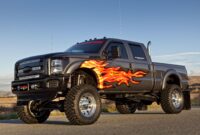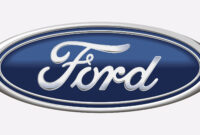1980s Toyota Trucks For Sale: A Comprehensive Guide to Owning a Legend sale.truckstrend.com
Introduction: The Enduring Appeal of 1980s Toyota Trucks
In an automotive landscape increasingly dominated by complex electronics, plush interiors, and ever-growing dimensions, the humble 1980s Toyota truck stands as a testament to simpler times and uncompromising durability. These vehicles, spanning from the rugged Toyota Pickup (often referred to as the Hilux in global markets) to the iconic first-generation 4Runner, have achieved legendary status for their unwavering reliability, straightforward mechanics, and surprising capability. For enthusiasts, off-roaders, and those simply seeking a reliable, characterful daily driver, the quest for 1980s Toyota trucks for sale remains a vibrant pursuit.
1980s Toyota Trucks For Sale: A Comprehensive Guide to Owning a Legend
More than just utilitarian workhorses, these trucks evoke a powerful sense of nostalgia, often appearing in popular culture (who can forget Marty McFly’s dream truck?). Their appeal lies in their unpretentious design, the satisfying mechanical feel of their controls, and an almost bulletproof construction that allows many examples to still run strong decades after rolling off the assembly line. This article serves as a comprehensive guide for anyone looking to navigate the market for 1980s Toyota trucks, offering insights into what makes them special, what to look for, and how to make an informed purchase.
Why the 1980s Toyota Truck Endures: A Legacy of Reliability and Simplicity
The staying power of 1980s Toyota trucks is not accidental; it’s engineered. Toyota’s philosophy during this era prioritized longevity and dependability above all else, resulting in vehicles that could withstand incredible abuse and neglect.
Key Factors Contributing to Their Longevity:
- Legendary Engines: The 22R and 22RE (fuel-injected version) 2.4-liter four-cylinder engines are the heart of many 80s Toyota trucks. Renowned for their incredible durability, these engines are capable of hundreds of thousands of miles with basic maintenance. Their simple, non-interference design makes them relatively easy to work on and forgiving of less-than-perfect care. While the later 3VZE V6 offered more power, it’s generally considered less robust than its four-cylinder siblings.
- Robust Drivetrains: Whether equipped with manual or automatic transmissions, two-wheel drive (2WD) or four-wheel drive (4WD) systems, the drivetrains were overbuilt. Solid axles (on early 80s models and 4WD rear axles) and sturdy independent front suspension (IFS) on later 80s 4WD models provided excellent off-road articulation and on-road stability for their time.
- Simple Electronics: Compared to modern vehicles, the electrical systems are remarkably straightforward, reducing potential points of failure and simplifying diagnostics and repairs.
- Body-on-Frame Construction: This traditional truck construction provides a strong, rigid platform that can handle heavy loads and rough terrain, contributing to their longevity and ease of repair.
- Global Reputation: These trucks earned their stripes in some of the world’s most demanding environments, from African deserts to South American mountains, solidifying their reputation for toughness.

This commitment to engineering excellence means that even today, a well-maintained 1980s Toyota truck can serve as a dependable daily driver, a formidable off-road rig, or a cherished classic.
Key Models and Their Characteristics: Navigating the 80s Toyota Truck Lineup
.jpg?t=166725447192)
The 1980s saw Toyota’s truck offerings evolve, but two primary models dominate the enthusiast market: the Pickup and the 4Runner.
The Toyota Pickup (Hilux)
Throughout the 1980s, the Toyota Pickup, often simply referred to as "the Toyota Truck," underwent significant changes.
- 1979-1983 (Fourth Generation): While technically introduced in late 1978, these models represent the early 80s aesthetic. They are characterized by their solid front axle (on 4WD models), carbureted 22R engines, and rugged, boxy styling. These are highly sought after by off-road enthusiasts for their simplicity and robust front end.
- 1984-1988 (Fifth Generation): This is arguably the most iconic 80s Toyota truck generation. Key changes included the introduction of Independent Front Suspension (IFS) on most 4WD models (though solid axle swaps are common), and the widespread availability of the fuel-injected 22RE engine, offering improved performance and fuel economy. Single cab, Xtracab (extended cab), and various bed lengths were available. Turbocharged versions of the 22R-E were also offered, providing a rare performance boost.
- 1989-1995 (Sixth Generation – "Pickup"): While the 1990s models, this generation was introduced in late 1988 for the 1989 model year. It featured a more aerodynamic design, a new V6 engine option (3VZE), and a more refined interior. These are often considered the last of the "true" Toyota Pickups before the introduction of the Tacoma.
.jpg?t=166725515159)
The Toyota 4Runner (Hilux Surf)
Introduced in 1984, the first-generation 4Runner quickly became a sensation, essentially a Pickup with an integrated rear passenger compartment and a removable fiberglass shell over the cargo area.
- 1984-1989 (First Generation): These 4Runners share most of their chassis and mechanicals with the Pickup of the same era. They were primarily 2-door models (though a very rare 4-door prototype existed) and came standard with the 22R or 22RE engine. The removable rear top is a defining feature, making them incredibly versatile for open-air driving. They typically featured a coil-sprung rear suspension for a slightly more comfortable ride than the leaf-sprung Pickups. Like the Pickups, early 4Runners had a solid front axle (1984-85), while later models adopted IFS (1986-89).
Choosing between a Pickup and a 4Runner largely depends on your needs: the Pickup offers maximum utility for hauling, while the 4Runner provides enclosed passenger space and a unique SUV/convertible hybrid experience.
What to Look For When Buying 1980s Toyota Trucks For Sale: A Buyer’s Guide
Purchasing a vintage vehicle requires a keen eye and a methodical approach. For 1980s Toyota trucks, certain areas demand particular attention.
1. Rust: The Silent Killer
Rust is the primary enemy of these trucks, especially in regions that experience road salt or high humidity.
- Frame: Inspect the frame thoroughly, particularly near suspension mounting points, behind the front wheels, and around the rear leaf spring hangers. Surface rust is common, but deep, flaky, or perforated rust is a major red flag.
- Body Panels: Check fender wells, rocker panels, cab corners, the floorboards, and the bed (especially under the bed liner if present). The seams where body panels meet are also prone to rust.
- Fuel Tank and Lines: Inspect for corrosion.
2. Engine and Drivetrain
Even with their reputation, 40-year-old components can show wear.
- Engine: Listen for unusual noises (knocks, ticking), check for excessive smoke from the exhaust (blue for oil, white for coolant), and look for oil leaks. A well-maintained 22RE should start easily and idle smoothly. Ask for service records. A compression test can reveal engine health.
- Transmission: For manuals, check clutch engagement and listen for grinding or difficulty shifting. For automatics, ensure smooth shifts without slipping.
- Transfer Case (4×4): Engage 4WD high and low. Ensure it shifts smoothly and holds power. Listen for grinding or clunking.
- Differentials: Check for leaks and excessive noise during a test drive.
3. Suspension, Steering, and Brakes
These components directly impact safety and drivability.
- Suspension: Look for sagging, especially in the rear. Check bushings, ball joints (on IFS models), and tie rod ends for wear.
- Steering: Excessive play in the steering wheel could indicate a worn steering box, tie rods, or ball joints.
- Brakes: Ensure the pedal feels firm and the truck stops straight without pulling. Check for pulsing or grinding.
4. Interior and Electrical
While less critical for function, interior condition impacts comfort and value.
- Interior: Check seats for rips, dash for cracks (common), and overall cleanliness. Ensure all gauges, lights, wipers, and HVAC controls work.
- Electrical: Simple systems are generally reliable, but check headlights, taillights, turn signals, and interior lights. Power windows (if equipped) can be slow or sticky.
5. Modifications and Documentation
- Modifications: Be wary of heavily modified trucks unless you understand the modifications and they are professionally done. Poorly executed lifts, engine swaps, or electrical work can lead to endless headaches. Stock or mildly modified examples often hold more value.
- Documentation: A clean title is paramount. Service records, original owner’s manuals, and any history of major repairs add significant value and peace of mind.
Practical Advice: Pre-Purchase Inspection (PPI)
If you’re serious about a truck, invest in a pre-purchase inspection by a trusted mechanic, preferably one familiar with older Toyota vehicles. They can identify issues you might miss and provide a realistic assessment of the truck’s condition and potential future costs.
Common Challenges and Solutions
Owning an 80s Toyota truck isn’t without its quirks, but most challenges have straightforward solutions.
- Challenge: Rust Repair:
- Solution: For minor surface rust, sanding and repainting can suffice. For more extensive rust, patch panels are available, or professional bodywork may be required. Frame rust often necessitates specialized welding and fabrication. Prevention (undercoating, regular washing) is key once repaired.
- Challenge: Aging Components:
- Solution: Many common wear-and-tear parts (bushings, seals, hoses, brake components) are readily available from aftermarket suppliers. Engine rebuild kits are also common. Specific trim pieces or rare options can be harder to find, often requiring sourcing from salvage yards or online forums.
- Challenge: Lack of Modern Amenities:
- Solution: These trucks are basic. If you desire modern comforts, aftermarket stereos, upgraded lighting (LED conversions), and AC system overhauls are popular modifications. Don’t expect power everything or advanced infotainment.
- Challenge: Finding Unmolested Examples:
- Solution: Patience is crucial. Many of these trucks have been used hard or modified. Expand your search radius and be prepared to travel for a well-preserved or properly restored example. Join online communities and forums dedicated to 80s Toyota trucks; members often know of vehicles for sale.
Pricing and Valuation: Understanding the Market
The price of 1980s Toyota trucks for sale can vary wildly depending on several factors.
- Condition: This is the most significant factor. A rust-free, well-maintained, low-mileage example will command a premium over a rusty, high-mileage project truck. "Excellent" condition often implies restoration or near-perfect originality.
- Model and Configuration: 4Runners generally fetch higher prices than Pickups. 4WD models are more desirable and expensive than 2WD. Manual transmissions often hold their value better than automatics among enthusiasts.
- Engine: Trucks with the 22RE engine typically command more than those with the carbureted 22R due to better performance and reliability.
- Location: Trucks in dry, rust-free climates (e.g., Southwest US) will be more expensive due to their preserved condition.
- Modifications: Tasteful, high-quality modifications (e.g., professional lift kits, engine upgrades) can add value, but poorly done or extreme modifications can detract from it.
Estimated Price Guide for 1980s Toyota Trucks (USD)
| Model/Configuration | Condition: Project/Parts | Condition: Fair/Driver | Condition: Good/Solid Driver | Condition: Excellent/Collector |
|---|---|---|---|---|
| Pickup 2WD (22R/22RE) | $1,000 – $3,000 | $3,000 – $6,000 | $6,000 – $10,000 | $10,000 – $20,000+ |
| Pickup 4WD (22R/22RE) | $2,000 – $5,000 | $5,000 – $10,000 | $10,000 – $18,000 | $18,000 – $35,000+ |
| Pickup 4WD Turbo (Rare) | $3,000 – $7,000 | $7,000 – $12,000 | $12,000 – $25,000 | $25,000 – $45,000+ |
| 4Runner 2WD (22R/22RE) | $1,500 – $4,000 | $4,000 – $8,000 | $8,000 – $15,000 | $15,000 – $28,000+ |
| 4Runner 4WD (22R/22RE) | $3,000 – $7,000 | $7,000 – $15,000 | $15,000 – $25,000 | $25,000 – $50,000+ |
| 4Runner 4WD (Solid Axle 84-85) | $4,000 – $8,000 | $8,000 – $18,000 | $18,000 – $30,000 | $30,000 – $60,000+ |
Note: Prices are estimates and can fluctuate based on market demand, specific year, mileage, and originality. "Excellent/Collector" condition implies low miles, rust-free, original or professional restoration.
Tips for a Successful Purchase or Sale
Whether you’re buying or selling, a few key tips can smooth the process.
For Buyers:
- Do Your Homework: Research common issues, model variations, and fair market values.
- Be Patient: The right truck may not appear overnight. Don’t rush into a purchase.
- Inspect Thoroughly: Follow the "What to Look For" guide above. Bring a friend who knows cars if you’re not confident.
- Test Drive: Drive the truck at various speeds, on different surfaces, and engage 4WD if applicable. Listen, feel, and observe.
- Negotiate: Always be prepared to negotiate, but be realistic about the truck’s value.
- Factor in Costs: Budget for potential repairs, maintenance, insurance, and possibly shipping.
For Sellers:
- Be Honest: Disclose any known issues or flaws. Transparency builds trust.
- Clean and Detail: A clean truck, inside and out, presents much better and suggests good care.
- Document Everything: Gather service records, receipts, and the title. This adds value and credibility.
- Take Great Photos: High-quality, well-lit photos from various angles (interior, exterior, engine bay, underside) are crucial.
- Set a Realistic Price: Research comparable sales. Be prepared to justify your asking price based on condition and features.
Frequently Asked Questions (FAQ)
Q: Are 1980s Toyota trucks truly reliable?
A: Yes, they are legendary for their reliability. With proper maintenance, the 22R/22RE engines and robust drivetrains can last for hundreds of thousands of miles.
Q: What’s the main difference between a Toyota Pickup and a 4Runner from the 80s?
A: The Pickup is a traditional open-bed truck. The first-generation 4Runner (1984-1989) is essentially an SUV built on the Pickup chassis, featuring a fully enclosed rear passenger area and, notably, a removable fiberglass hardtop.
Q: Which engine is better: 22R or 22RE?
A: The 22RE (fuel-injected) is generally preferred for its slightly better power, fuel economy, and easier cold starts compared to the carbureted 22R. Both are incredibly durable. The later 3VZE V6 offers more power but is known for head gasket issues.
Q: Are parts still available for these older trucks?
A: Surprisingly, yes! Many common mechanical parts, maintenance items, and even some body panels are still available from aftermarket suppliers. OEM parts for specific trim or interior pieces can be harder to find but often surface on online forums or salvage yards.
Q: Can a 1980s Toyota truck be a daily driver today?
A: Absolutely. Many owners use them as daily drivers. While they lack modern amenities, their simplicity and reliability make them perfectly capable for regular use, provided they are well-maintained.
Q: What kind of fuel economy can I expect?
A: Fuel economy varies by engine and drivetrain, but typically, 22R/22RE 4×4 models can achieve 18-22 MPG, while 2WD models might get slightly better.
Q: Are they good for off-roading?
A: Excellent. The 4×4 models, especially those with the solid front axle (early 80s Pickups and 84-85 4Runners), are highly capable off-roaders and a popular choice for building custom rigs.
Q: How much rust is "too much" when buying?
A: Any significant rust on the frame, especially near suspension mounts, is a major concern and often a deal-breaker. Minor surface rust on the body or bed is usually manageable, but extensive perforation will be costly to repair.
Conclusion: Driving a Piece of Automotive History
The market for 1980s Toyota trucks for sale is more robust than ever, a testament to their timeless appeal and legendary durability. These aren’t just old vehicles; they are rolling pieces of automotive history that continue to serve their owners with an unwavering spirit. Whether you’re drawn to their iconic styling, their bulletproof mechanicals, or their undeniable cool factor, owning an 80s Toyota truck is an experience unlike any other.
While the search may require patience and a thorough inspection, the reward is a vehicle that embodies simplicity, ruggedness, and a connection to an era when trucks were built to last. For those willing to embrace their charming quirks and commit to basic maintenance, an 80s Toyota truck isn’t just a purchase; it’s an investment in a reliable, enjoyable, and increasingly valuable piece of automotive legend.




